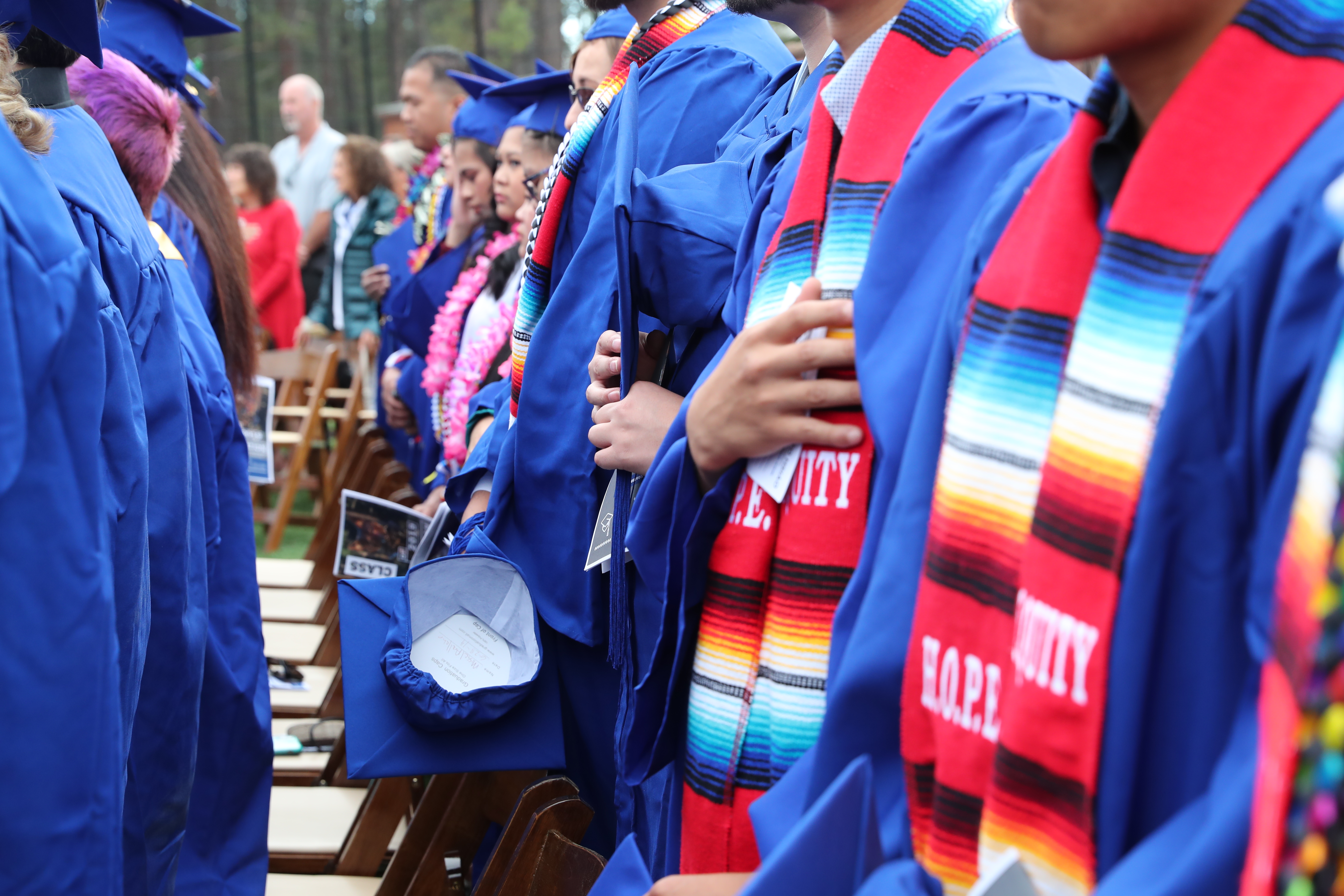LTCC Closing the Gap for Latinx Students
January 4, 2021
 Lake Tahoe Community College (LTCC) is one of a handful of California community colleges
that has significantly closed equity gaps and increased success rates for Latinx students,
according to a new report from the Public Policy Institute of California.
Lake Tahoe Community College (LTCC) is one of a handful of California community colleges
that has significantly closed equity gaps and increased success rates for Latinx students,
according to a new report from the Public Policy Institute of California.
The positive results are revealed by statistics showing how more Latinx students are taking and succeeding in core transfer-level English courses within their first year at LTCC. How students perform in these gateway classes often reveals their overall success in college, creating a picture of just how well these students are doing overall and how likely they are to stick with and meet their academic goals.
LTCC, along with 12 other colleges in a 116-college system, was found to have “completely closed gaps for Latino students in one-term throughout rates in fall 2019” for English courses, compared to data from fall 2015. While many colleges have seen improvements in equity in recent years, only 13 schools, including LTCC, were noted for completely closing their equity gaps in English.
“It took a lot of hard work by a lot of people at LTCC, including the faculty in our English department, to achieve these results,” said LTCC Superintendent/President Jeff DeFranco. “Our goal now is to replicate these results across the institution and take an all-hands-on-deck approach to making college more accessible to and successful for Latinx students. These early indicators show the benefits of evidence-based reforms and the importance of this work for our larger community.”
The Public Policy Institute of California’s report is the result of an examination of the effects of California’s AB 705 (2017) and companion bill AB 1805 (2018). These two laws were approved unanimously by the California Legislature in response to research showing that traditional remedial education pathways did not adequately ensure students achieved their educational goals. Together, these laws guarantee community college students access to transfer-level and gateway English and math courses. Data show that when students complete these courses within their first year, they are much more likely to continue with their education and meet their stated goals.
At LTCC, first-year completion rates in transfer-level English and math classes for all students showed some improvement over the past several years. However, the results for Latinx students were even better. Their completion rates for transfer-level English went from 35% in Fall 2017 to 42% in Fall 2018 to 63% in Fall 2019. For all other non-Hispanic students, the rates were 34% in Fall 2017 to 37% in both Fall 2018 and Fall 2019.
For transfer-level math, Hispanic student completion rates went from 9% in Fall 2017 to 11% in Fall 2018 to 29% in Fall 2019. Non-Hispanic student completion rates in transfer-level math were 11% in Fall 2017, 9% in Fall 2018, and 19% in Fall 2019.
While the Public Policy Institute’s study focuses on transfer-level math and English courses, another key indicator of Latinx student success at LTCC can be found in Fall-to-Winter persistence rates. When college students make it through their first Fall quarter or semester at school successfully and then return for Winter classes, that is often a strong indicator of how likely they’ll keep on going to complete their educational goals.
At LTCC, Latinx students saw Fall-to-Winter persistence rates of 65% in 2017, 79% in 2018, and 85% in 2019. This is a stronger result than what was seen from the non-Hispanic student population, which had persistence rates of 59% in 2017, 82% in 2018, and 77% in 2019.
The takeaway is that Latinx students have almost doubled their completion rate for transfer-level English and nearly tripled the rate for transfer-level math in the past three years. They outperformed non-Hispanic students when it came to persisting in their studies. Latinx students at LTCC are also steadily increasing the number of Associate of Art degrees they’re earning, and more than 40% of degrees awarded by LTCC during the 2019-20 academic year went to Hispanic students.
“We’re focused on providing support including mentoring, tutoring, increased academic counseling and other assistance that enhances classroom performance,” said DeFranco. “But we’re also hyper-focusing on helping students meet their most basic needs, like food assistance, providing textbooks and free technology, and other forms of financial aid that allow our students to focus on their studies. The research shows it’s working.”
Efforts to increase academic access and success for Latinx students is paying off all around the state of California. While only 13 schools in the system closed the equity gap completely in English, great work at reducing inequity is happening system-wide. Access to college composition classes is now nearly universal, and equity gaps in accessing these classes have narrowed. More students are successfully completing English composition and access to transfer-level math has more than doubled from Fall 2018 to Fall 2019 across the system.
Students used to have to take remedial English and math courses first if their skills were found to be below what was required for transfer-level courses. Now, these students can take corequisite classes in which they receive additional support in writing and math while enrolled in the transfer-level classes. This expedites their movement through these basic courses and bolsters student success.
The report highlights that great work has been done, but much remains to do across California’s community college system to improve access and success for minority students. Recommendations included focusing on improved counseling and curricular reforms to serve students from diverse backgrounds more effectively. More energy and focus will be needed to address closing equity gaps that are potentially being made worse by the COVID-19 pandemic.
